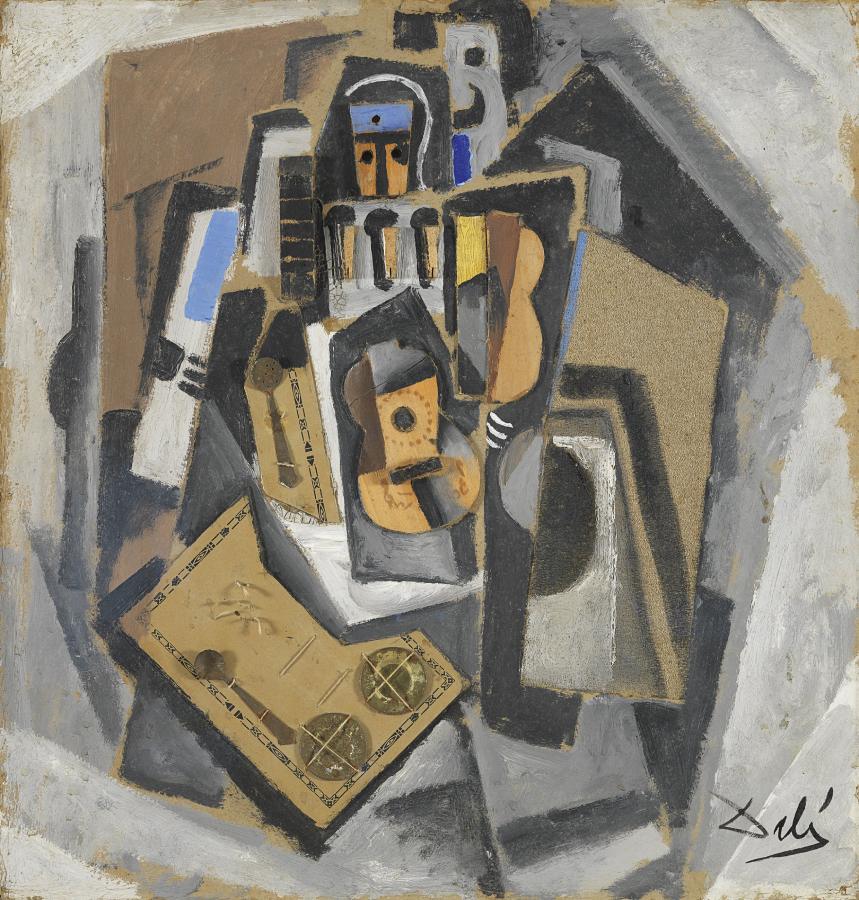Dalí, Salvador (1904-1989)
Pierrot con guitarra (Pierrot with a Guitar)
c.1923
Oil and collage on cardboard, 54.5 x 52.3 cm
Museo Thyssen-Bornemisza, Madrid
©Salvador Dalí, Fundación Gala-Salvador Dalí / VEGAP, Madrid
The Thyssen-Bornemisza Pierrot with a Guitar, a collage the artist amused himself making as a gift for his cousin Montserrat Dalí, is considered by Rafael Santos Torroella to be “a small masterpiece of Cubist inventiveness” and “one of those in which Dalí best captured the spirit and meaning of that trend.” Most likely executed at the Residencia de Estudiantes in Madrid, where the young painter lived while studying at the Escuela de Bellas Artes de San Fernando, it belongs to the Cubist series he produced between 1923 and 1925.
Unlike some of his colleagues, Dalí remained alert to external innovations. He reveals in The Secret Life that “in my room I was beginning to paint my first cubist paintings, which were directly and intentionally influenced by Juan Gris. They were almost monochromes. As a reaction against my previous colourist and impressionist periods.” In another passage he tells how these paintings secured him membership of the Madrid avant-garde circles: “[His companions at the Residence] came all in a group to look at my paintings and […] their surprise knew no limits. That I should be a cubist painter was the last thing they would have thought of!”
In the present Pierrot the interpretation of Cubist fragmentation takes the form of a surface divided into different planes and, like all Dalí’s Cubist works, is closely related to the Neo-Cubist trends that the Madrid avant-garde circles were late to espouse. It furthermore bears a close similarity to a Still Life by Picasso reproduced in the second issue of the journal Valori Plastici published in 1919.
Paloma Alarcó (T-B)
